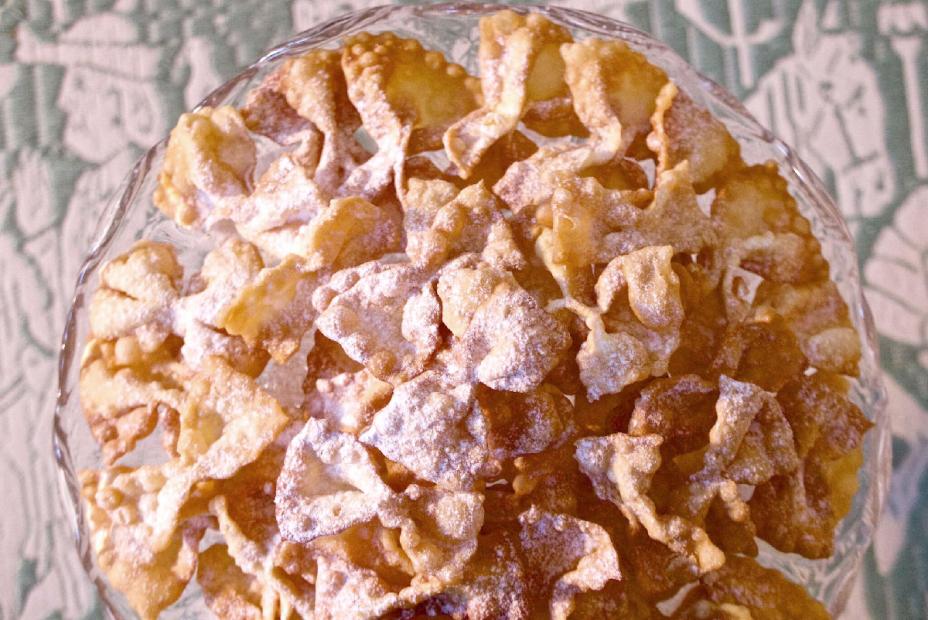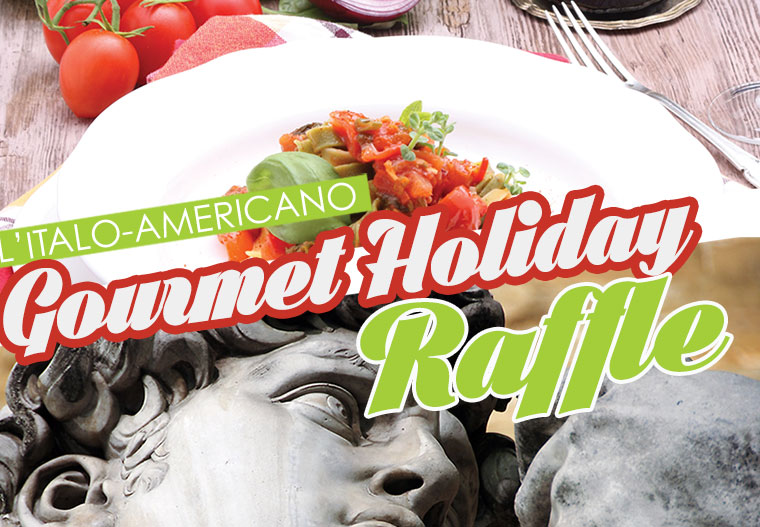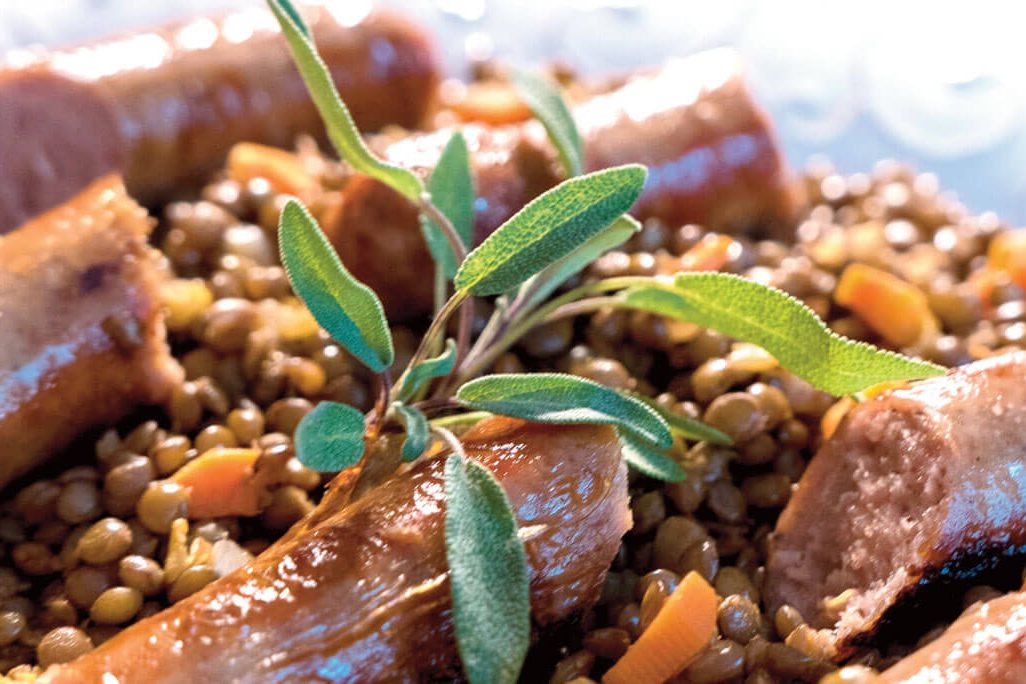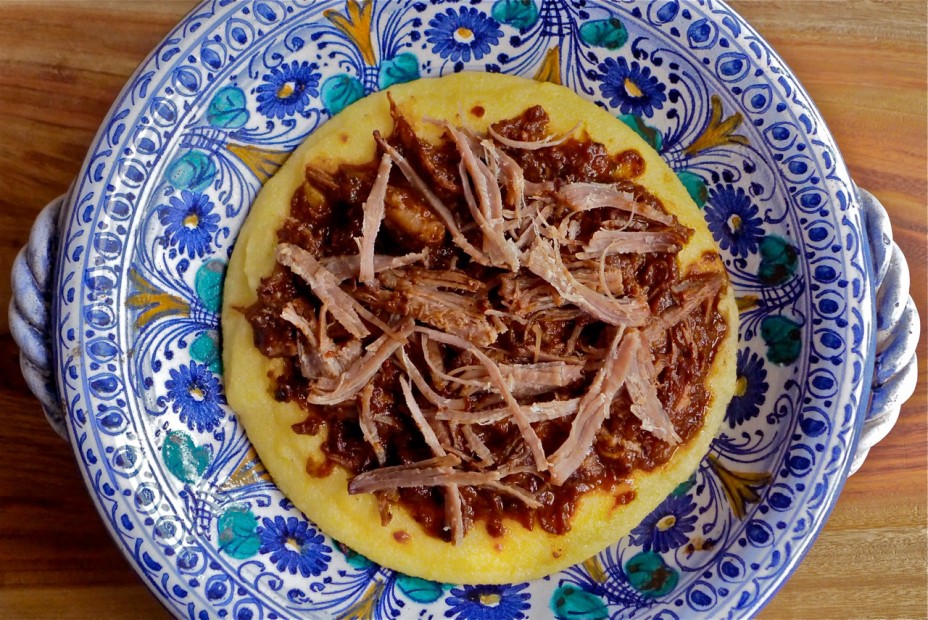Many holiday foods, sweets in particular, are imbued with symbolic meaning, making anyone preparing them feel a connection to his or her tribe or traditions. Crisp and sweet ribbon-like pastries have a particular significance in the repertoire of Italian confections, especially at carnival time, but they are often made for other celebrations as well, whether weddings, Christmas, or New Year. Every region or province seems to have its own version, which go by many names, depending on their shape and local history: cenci, “tatters” (Tuscany); sfràppole “fringe” (Perugia); chiacchiere, “chatter” (Lombardy); bugie, “lies” (Bologna and Liguria); galani, “frills” (Venice and Verona); or crostole, “crusts” (Friuli), just to name a few.
My mother, who spent her girlhood in Rome, called them frappe; to my paternal grandmother, who was born in Bari, they were carteddàte. My mother’s, usually shaped into knots, were lighter, and dusted with a veil of powdered sugar, but nonna Domenica made hers to resemble crowns of thorns and after they were cooked, she drenched them in a sweetened wine syrup meant to symbolize the blood of Christ. Orginally based on vincotto, cooked down, fermented wine must, my grandmother’s American-Italian version substituted raisins, port, honey, and spices, which were simmered together until they formed a thick, ambrosial syrup.
My Christmas frappe tradition merges both my mother’s and my grandmother’s customs. I like to make frappe into little bows resembling angels’ wings, or more simply, into long strips symbolizing the swaddling of the Christ child. I may cover them with powdered sugar, or leave them plain, passing a sauceboat filled with my grandmother’s raisin syrup at the table.
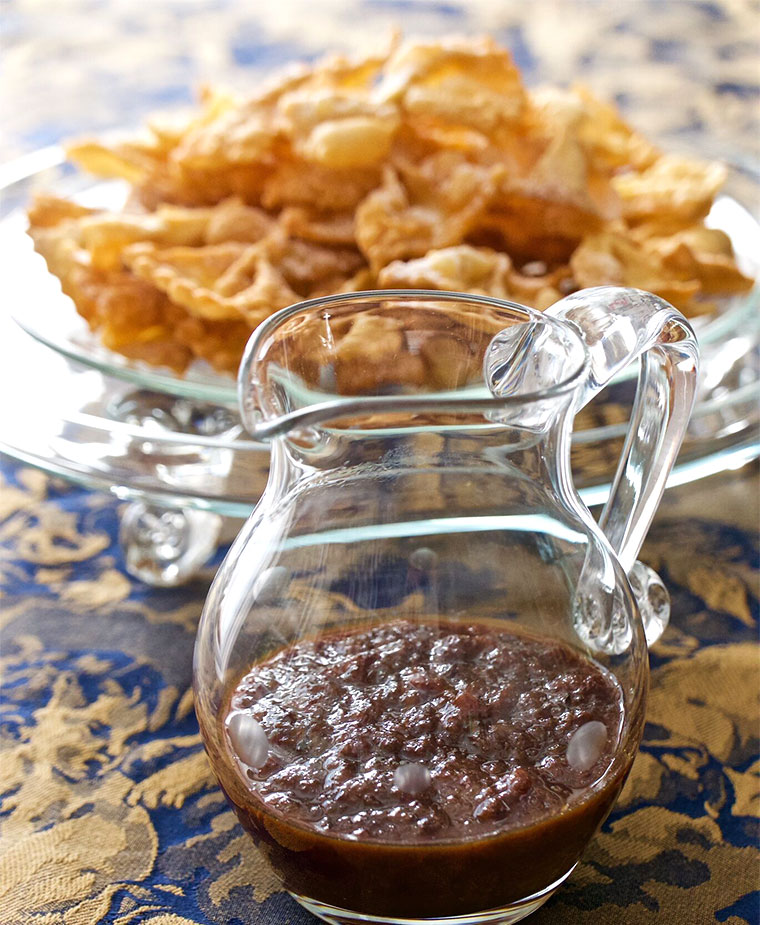
The best pastries of this genre are friable (hence the butter in the dough), and so delicately thin that they are, in essence vaporoso, “like vapor,” as Ranieri Da Mosto describes in his cookbook, Il Veneto in cucina. The dough needs wine or spirits as well. This can be anything from dry white wine or sherry, to grappa, cognac, acquavit, or rum. The miniscule amount of liquor used doesn’t impart much flavor, but the evaporation of the alcohol causes the pastries to fry up crisply and makes them light. If you are not a baker, have no fear. Frappe are easy to make, only be sure there are plenty— they are somewhat addictive.
Buon Natale!
Frappe
Makes enough “angels’ wings” or “bows” to fill three large roasting pans
Because the best frappe are thin and delicate, the dough must be rolled out very thinly. The task is made easier with a hand-cranked pasta machine. Frappe can be eaten right after they are made, or up to a couple of weeks afterward if stored in tightly sealed tins at room temperature.
• generous 2 cups unbleached flour, or as needed
• 2 tablespoons cold unsalted butter, cut into small pieces
3 large eggs, lightly beaten
• 3 tablespoons granulated sugar
• ¼ teaspoon salt
• ¼ cup acquavit, grappa, rum, dry vermouth, or dry sherry
• safflower or other vegetable oil, for deep-frying
• confectioners’ sugar, for dusting
1 Attach a hand-cranked pasta machine to the work surface. Put the flour and butter into the processor bowl and process until the butter resembles small crumbs, about 30 seconds. Add the eggs, granulated sugar, salt, and liquor and process until a ball of dough is formed.
2 Working on a floured surface, knead the dough lightly, incorporating more flour as needed until it is smooth and elastic but not at all sticky. Divide the dough into 4 equal portions and let rest under an inverted bowl for 15 minutes.
3 Work with one portion at a time, covering the remaining portions with the inverted bowl. Use a rolling pin to flatten the ball enough to fold it in thirds, as you would a letter. Roll it out thin enough to be able to pass through the widest setting of the pasta machine. Flour the dough lightly and pass it through every notch of the machine without pulling or stretching it at the other end, draping it over your outstretched hand, thumb in the air to avoid puncturing it. If the dough feels at all sticky, dust it lightly with flour before passing it through the rollers. Repeat the rolling out process until the strip is passed through each setting except the last (passing it through the final setting would make the dough too thin). Lay the strip out on a clean work surface and cover it with a dry towel until ready to cut. Repeat the process with each remaining ball of dough. Work with two strips at a time and set them side by side, covered with a dry cloth.
4 For “angels’ wings” or “bows,” using a fluted pastry wheel, cut the strips into rectangles about 1” x 2”. Pinch the center to form bow-like shapes. Spread them out on clean, dry kitchen towels. Repeat with the remaining dough.
5 Pour the oil to a depth of about 2” into a deep skillet and heat until a scrap of dough dropped into it sizzles upon contact. Fry the frappe, turning once, until golden on both sides, about a minute, lowering the heat if they are browning too quickly. Do not crowd the pan. There should be enough oil around each to allow quick and even cooking. Using a wire skimmer, transfer to paper towels to drain. You can stack them to drain, but put paper towels between the layers to absorb the excess oil.
6 When all of the frappe are fried, let them cool. Dust with confectioners’ sugar before serving, or use the following recipe to make raisin syrup.
Nonna Domenica’s Raisin Syrup
Makes about 2¼ cups
The syrup can be made ahead and keeps well, chilled, for up to three weeks.
• 1 pound raisins
• 1 cup port wine or dry sherry
• ½ teaspoon ground cloves
• pinch freshly grated nutmeg
• 1 cinnamon stick
• ½ cup honey
1 Gently boil the raisins in 3 cups of water for an hour in a covered pan, lowering the heat once they start to simmer.
2 Strain the boiled raisins through a food mill. You should have approximately 2 cups of syrup afterwards.
3 Return the syrup to the pan and add the wine, ground cloves, nutmeg, cinnamon stick, and honey. Simmer another 30 minutes. Cool.
4 Lace the syrup over a mound of frappe, or transfer it to a sauce boat with ladle and pass it at the table.
Preparation time: 2 hours
Cooking time: about 1 hour
Total time: about 3 hours
Difficulty Level: Medium
Julia della Croce is a food writer and James Beard award-winning cookbook author and recipe developer based in New York. She is presently incubating a book about her family’s ancestral region, Sardegna. Visit her website, www.juliadellacroce.com and blog, http://juliadellacroce.com/forktales1/, connect on Facebook: Julia della Croce – chef & foodwriter, Twitter: @juliadellacroce and Instagram: juliadellacroce.
